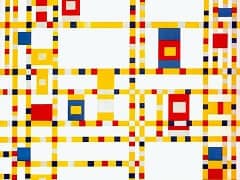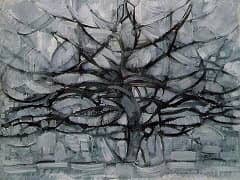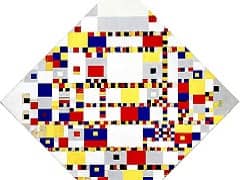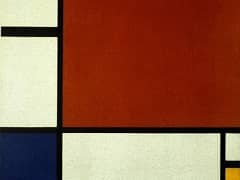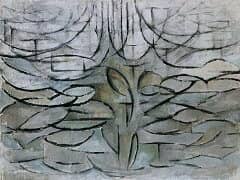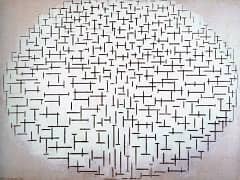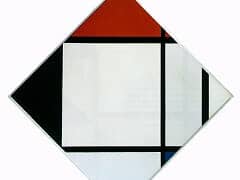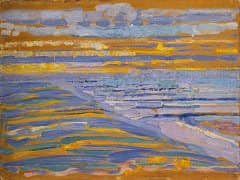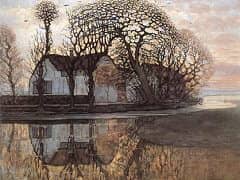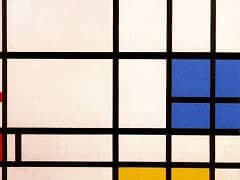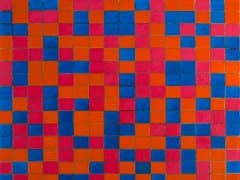Composition with Red, Yellow and Blue, 1942 by Piet Mondrian
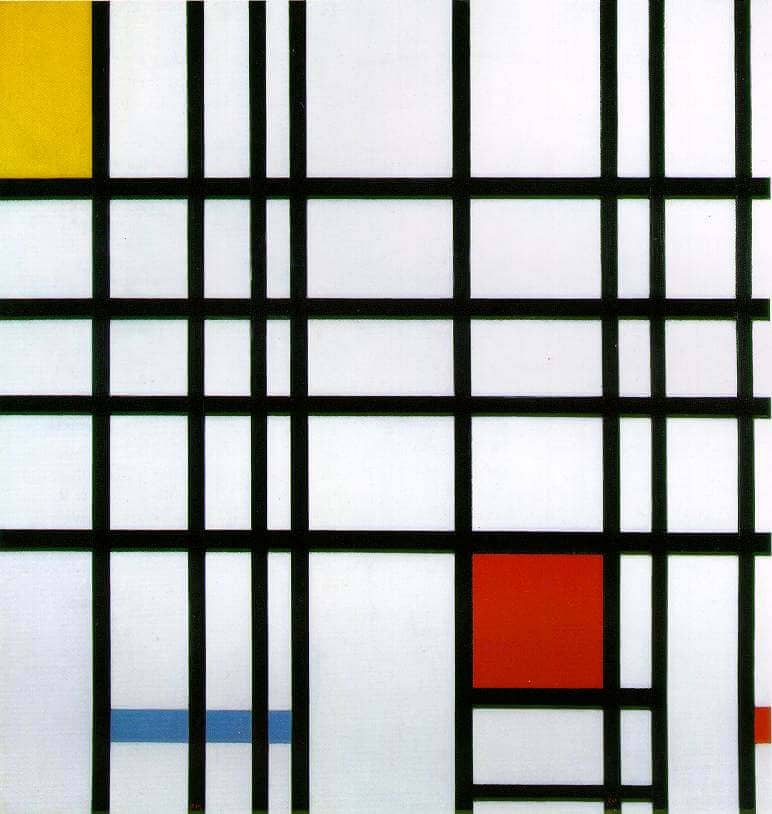
Mondrian's interest lay in the abstract quality of line but by 1914 he had all but eliminated the curved line from his work. By 1916 he had suppressed any sense of a subject. Still later he developed a new form of rigorous abstraction called Neo-Plasticism in which he limited himself to straight, horizontal and vertical lines and basic primary colors. Typically his compositions were not symmetrical but could scarcely be purer in their elements. He felt this art reflected a greater, universal truth beyond everyday appearance.
Composition with Red, Yellow and Blue represents a mature stage of Mondrian's abstraction. It seems to be a flat work, but there are differences in the texture of different elements. While the black stripes are the flattest of the paintings, in the areas with color are clear the brushstrokes, all in the same direction. The white spaces are, on the contrary, painted in layers, using brushstrokes that are put in different directions. And all of these produce a depth that, to the naked eye, cannot be appreciated.

